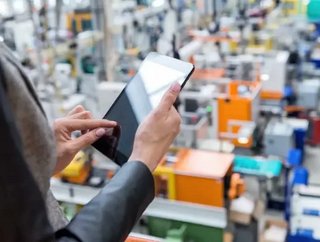How digital transformation is enabling a resilient and sustainable supply chain

The triple blows from hurricanes Harvey, Irma, and Maria in the United States were a wake-up call to many businesses on the importance of managing and predicting supply chain risks.
While the long-term impacts of these disasters are still unclear, operations across the country were immediately disrupted as factories and business shut down, transportation came to a standstill, and fuel prices skyrocketed. Yet the impacts were far less disruptive compared to even one or two years ago thanks to the adaptability that new digital technologies provide.
Digitisation is uniting a once siloed supply chain into an integrated end-to-end digital ecosystem – from the procurement of raw materials, to manufacturing and logistics, and finally to customer fulfillment. According to a recent PwC study, nearly 75% of companies expect to have achieved advanced levels of digitisation within the next three years. For large and complex supply chains like Hewlett Packard Enterprise (HPE), this digital transformation not only offers unprecedented flexibility and visibility, but has the ability to drive efficiencies, boost innovation, and reduce risk.
Increasing resiliency and responsiveness
Our ability to minimise disruptions has been accelerated by the rise of predictive analytics and big data, which anticipate shifts in customer demand, foresee the availability of raw materials, and can prepare us for catastrophic events. Machine learning will soon be able to combine real-time supplier data like stock inventories and logistics trackers with external weather and news sources to make smarter decisions, faster. In fact, near-real time visibility and tracking in our supply chains already have the ability to produce immediate insights that can reduce reaction times from days or weeks to just hours or minutes.
For HPE, the digitisation of a management process that was manual and laborious only a few years ago was a critical asset in our ability to quickly shift demand, reposition materials, and reroute orders in the wake of Hurricane Harvey. Our digital platform allowed us to seamlessly aggregate data from various suppliers, sites, and systems in order to provide insights to suppliers and logistics providers, ensuring the end-to-end instrumentation of a continuous process.
Severe disruptions will continue to test our resiliencies as climate impacts are felt across the world. Operating models that are adaptable, automated, and data-driven will be the future of industry – ultimately increasing predictability, accelerating manufacturing, and enabling cost reductions for business.
Enabling the connected factory
Nowhere is digital disruption more evident today than with the Industrial Internet of Things (IoT), enabling manufacturers to collect and analyse data from connected assets, people and places, to deliver actionable insights in an industrial environment. Imagine a factory where customers can validate their order remotely, machine maintenance needs can be predicted, and utilities can be optimised by understanding their loads from a remote dashboard.
Automation and advanced manufacturing will reshape industry, raising new challenges related to workforce displacement while offering new opportunities to capitalise on the huge volume of real-time data. This IoT data can enable industrial organisations to reduce example, by monitoring energy use in manufacturing facilities with smart sensors and analytics, we can lower consumption, improve performance and change the way energy is consumed.
SEE ALSO:
-
One month on: effects of Hurricane Harvey and Irma on industry and supply chains analysed
-
EcoVadis: Analysing the sustainability of global supply chains
-
DHL partners with Elemica to build risk assessment solution for supply chains
But IoT isn’t just about making efficiency gains; it’s about a complete transformation of industry. Beyond the factory, supply chains will see logistics reimagined with the connected vehicle, and purchasing decisions will become increasingly interactive and transparent. Those who succeed in truly integrating IoT into their value chains can capture a portion of a trillion-dollar opportunity.
Defining the future of sustainable production
In an increasingly competitive world, industrial supply chains cannot afford to lose out on operational efficiencies nor waiver in ethical practices. Their goal must be to deliver a quality product to the customer quickly, responsibly, efficiently, and cost effectively. Those organisations that pursue their digital vision while counting sustainability among the outcomes they seek will be more resilient and well-positioned for long-term success.
Businesses and NGOs must continue to partner together to tackle the world’s most complex challenges. Initiatives like the World Economic Forum’s Accelerating Sustainable Production bring together thought leaders across sectors to identify ways that emerging technologies can enable the transformation of production systems to be more efficient with minimal negative impact to environment and wellbeing.
Companies are also increasingly focused on building the capabilities of their suppliers, whether to partner on innovative solutions or to help achieve supply chain targets. As the owner of one of the industry’s most extensive supply chains, we at HPE believe it’s imperative that we manage our outsourced manufacturing in a responsible way, and work together with our suppliers to ensure the resiliency of our value chain by mitigating risks like climate change and resource scarcity.
Earlier this year, HPE launched a first-of-its-kind supply chain management programme based on climate science, which aims to avoid 100mn tonnes of emissions by enabling manufacturing suppliers to set emissions reduction targets within their own operations. It is our hope that this programme will catalyse the IT industry and beyond by setting a new standard for supply chain emissions engagement and abatement.
As supply chains become increasingly connected we are already seeing how digitisation can enable supply chains to be more adaptable and responsive. Advanced risk prediction tools will include dimensions such as environmental and ethical risk monitoring, and transformative technologies will break down the barriers of our current supply chain processes to create a transparent and collaborative network. By weaving sustainability into the fabric of our digital supply chain strategy and leveraging it as a driver of innovation, businesses can secure a competitive advantage.






